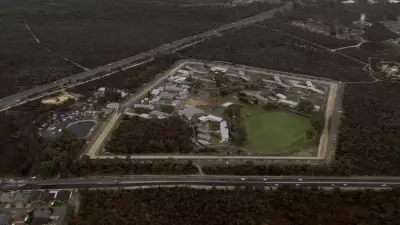
Prime Minister Anthony Albanese finds himself at a political crossroads as his government approaches a critical juncture that could define Labor's future for years to come. The political landscape has shifted dramatically since Labor's 2022 election victory, presenting both opportunities and significant challenges for the incumbent government.
The Current Political Climate
Recent developments have placed the Albanese government under increasing pressure from multiple fronts. The cost of living crisis continues to dominate political discourse, with many Australians feeling the pinch of rising prices for essential goods and services. This economic pressure has translated into declining poll numbers for the government, creating an environment where every policy decision carries heightened significance.
Meanwhile, the opposition led by Peter Dutton has been capitalizing on voter discontent, positioning itself as a viable alternative for Australians seeking change. The political battleground has become increasingly fragmented, with crossbench MPs and minor parties gaining influence in a tightly contested parliament.
Policy Challenges and Opportunities
The government's legislative agenda faces several critical tests in the coming months. Key policy areas including climate action, industrial relations, and economic management will likely determine the government's political fortunes. How the Albanese government navigates these complex policy challenges could either solidify their position or create openings for their political opponents.
Several signature policies have already faced significant scrutiny, with some requiring substantial modification to pass through parliament. This reality of minority government has forced the Labor administration to engage in extensive negotiation and compromise, testing the Prime Minister's political skills and strategic vision.
The Road to the Next Election
Political analysts are closely watching how the government positions itself for the next federal election. The timing and strategy of this campaign will be crucial in determining whether Anthony Albanese can secure a second term or if Australia will see another change in government.
The Prime Minister's personal approval ratings remain a critical factor, with his leadership style and communication approach continuing to shape public perception of the government. Meanwhile, internal party dynamics and state-level political developments add additional layers of complexity to the federal political equation.
As the political cycle continues, both major parties are refining their messages and policy offerings. The Australian electorate appears increasingly volatile, with traditional voting patterns giving way to more fluid political allegiances. This environment creates both risks and opportunities for the Albanese government as it seeks to build a compelling case for re-election.
The coming months will prove decisive in determining whether Anthony Albanese can translate his government's achievements into lasting political success or if Labor will face another period in opposition. The stakes couldn't be higher for the Prime Minister and his team as they navigate one of the most challenging periods in recent Australian political history.





